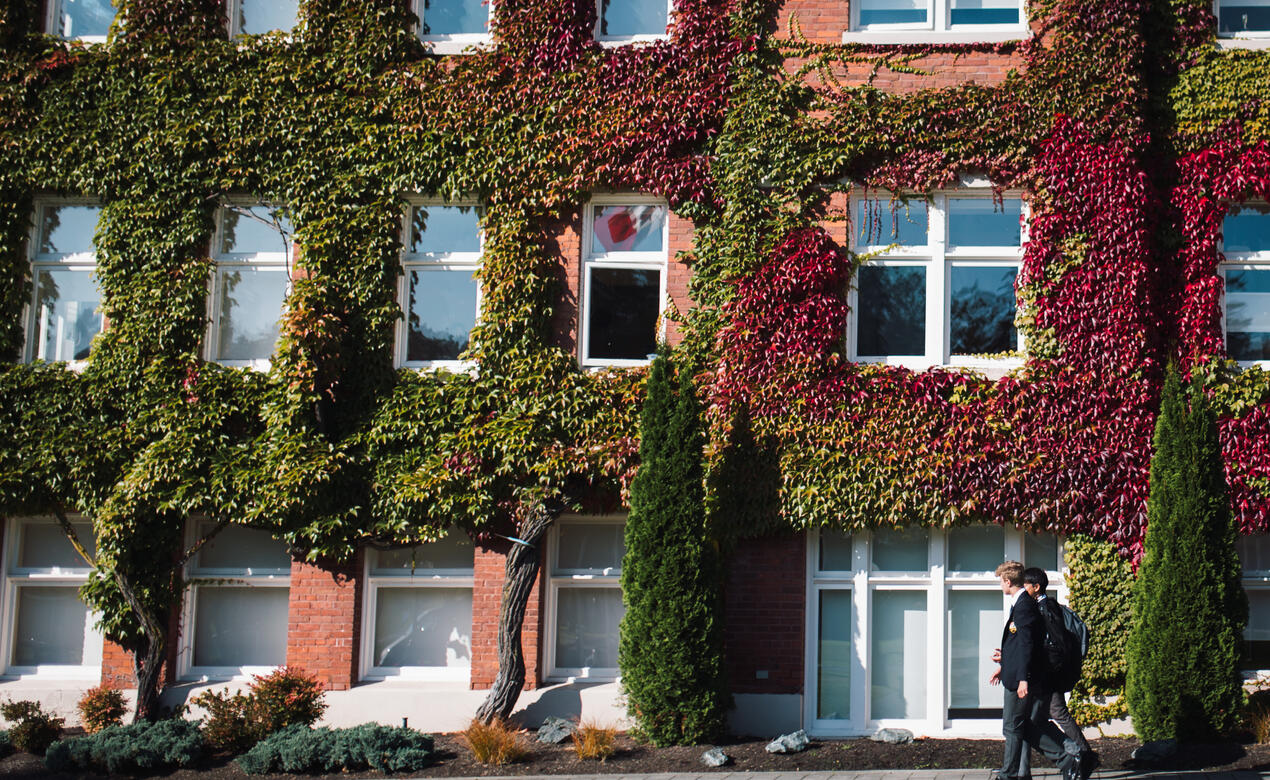
While leaving your car or bike with a valet at a nice restaurant or hotel may be considered a luxury experience, the Senior School phone valet program has a slightly different feel to it. After seven years of refining and tweaking our phone policy, this fall the Senior School has made some changes with the intention of reducing phone distractions in our classrooms and during community events.
These changes are also mirrored across both campuses and outlined in this year’s family handbook. Junior School continues to be an entirely phone-free campus for its students, while Middle School policies do not allow phone or smartwatch use during the day extending to 5:30 pm. Phones are provided at the main office and the office reception is answering phones throughout. Boarding has also implemented an evening device collection process.
With the massive popularity of Jonathan Haidt’s bestselling book, The Anxious Generation, and BC Premier David Eby’s announcement of new restrictions surrounding phones in schools, this is once again a hot topic. The research is clear that phones and the app’s they house are a distraction to students that affects their learning, and can lead to negative impacts on teenagers’ mental health. This is especially true for heavy social media users.
A low tech solution to a high tech problem
Last spring the Senior School carefully examined our phone policies, including a faculty idea lab, a student focus group, and exploring what other schools in our networks are doing. Opinions on how strict the school should approach phones varied, but all stakeholders agreed that it was important for there to be guard rails in place to guide our students’ relationships with their devices. One consistent theme that emerged from our faculty conversations was that students who come to class with a phone on their person are prone to distraction.
With this in mind, we have created ‘red light zones’ on campus, which include:
- all classrooms during instructional time
- Chapel
- school assemblies and,
- grade meetings
Phone and earbud use in these red zones is off limits. To address the temptation phones provide, each classroom in the Senior School has been equipped with a bin or pouches, and the expectation is that students store their phones here as soon as they arrive to class. Students who are found with phones can expect teachers to help them by storing it safely for the remainder of the class.

The rest of campus—common areas, hall ways, the dining hall, the quad—will be ‘yellow light zones’. In these spaces, we expect our students to use their phones responsibly. The focus will be on being present with their peers and practising healthy phone hygiene. Of course, we are under no illusions that this will play out perfectly. If and when students are not demonstrating healthy behaviour on their phones—gaming, social media scrolling, being overly absorbed in screens—school faculty and staff members will ask them to be present and put their phones away. Our emphasis will be on learning when, where and how phones ought to be used, rather than taking the approach of a full-scale ban. We believe this will better prepare our students for life which, for most of us, includes managing our relationship with our devices. An imperfect solution to a messy problem.
Support for change
What about the students who struggle to follow these guidelines?
This is where the school will step in to provide support. In these cases, our families can expect to hear from us so that we can work together to support the young people in our care. Additionally, we have an exciting new option in the form of our phone valet program, which requires students to check their phone at reception in the morning where it will be safely locked away for the day. Students will be able to collect their device after the school day has finished, and this routine will continue for the duration of their time in the valet program.

For children whose struggles persist, families are encouraged to reach out to the SMUS personal counselling team, and may want to engage an external counsellor to help support them. It is also worth emphasizing that students are not required to bring their phones to school, and for some students, not having a phone with them may be the best remedy. The reception phone is always available for students to use for important calls, and likewise messages can be relayed to students throughout the day. “Non-smart” phones are also becoming increasingly popular and we are seeing more students arriving on campus with these types of devices. These phones are subject to the same policies.
Our hope is that by doubling down on our approach in the classroom, and taking a learning-centred approach around campus, we will continue to create a learning environment where all students thrive, are present with their peers, and cultivate a positive relationship with technology.


